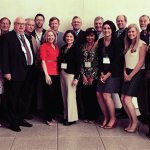I am honored, humbled and excited to serve as your ACR president. I’d like to share the following background information to illustrate the diverse set of life experiences I draw from to represent the ACR membership effectively. Personal Background Thanks to my mom, who was born and raised in Guatemala, I am bilingual in Spanish…








